 Typical PCs Each Year
Typical PCs Each Year
1998 was the year in which work on the International Space Station began, France won their own World Cup, the US President Clinton denied all, and Europe agreed on having a single currency.
In music, Celine Dion remained at the top of the charts for a good number of weeks with My Heart Will Go On, from the hit movie of the same year, Titanic, and Seinfeld finally went off the air after 180 episodes.
But onto more important topics...
Base desktop models at the start of 1998 came with a Pentium MMX 200 MHz, 32 MB or 64 MB of SDRAM, a 4 GB hard disk, 24x CD-ROM drive and a 17" SVGA monitor. Mid-range desktops got the new Pentium II running at 233 or 266 MHz, 6.4 GB of hard disk storage, and a 32x CD-ROM drive. At the highest end you could get the fastest chip available - Pentium II 300 MHz. These would come with 128 MB of SDRAM, a 19" SVGA monitor, a video card that came with 8 MB of onboard video RAM, and a wavetable audio card.
By October, Intel were shipping the Pentium II 450 MHz, as well as the new entry-level 300 MHz Celeron. Base desktops are now coming with a 400 MHz Pentium II and 64 MB SDRAM, whilst high-end PCs are getting this new 450 MHz variant and 128 MB SDRAM. Hard disk capacities also rose to 16 GB. DVD-ROM drives started to come installed in desktop PCs.
Operating System
I can't ignore the significant launch of Microsoft Windows 98 - I love Windows! I just prefer DOS ;-) - released to retail on May 15th 1998, it was still based on (layered on top of) MS-DOS.
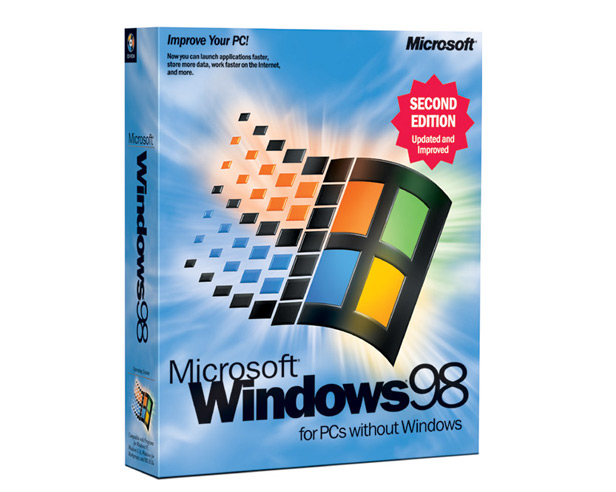
Windows 98 Retail Packaging
It added better support for USB devices, initiated the WDM (Windows Driver Model) to properly replace the older Virtual Device Driver VxD standard, though still supported it for backward-compatibility. It enhanced networking, caching of files, plug and play, and the registry was more robust than in Windows 95.
By this stage, software companies had adopted Windows fully as the future of the PC operating system. It had become the de-facto standard to boot into Windows, despite the fact you could drop into DOS at any time. This was true of Windows 95 too for the most part, but many legacy DOS apps were still in widespread use.
CPU and Motherboard
1998 was the year the Super 7 (aka Super Socket 7) market became very popular, against predictions made a year before, despite Intel still dominating the microprocessor market with between 80% and 90% market share.
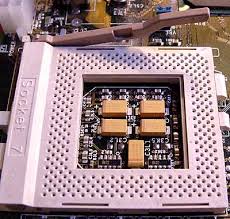
Super 7 motherboards continued to use the widely-adopted Socket 7 CPU socket standard
Continuing with the Super 7 standard, AMD launched their K6 successor, the K6-2, which came with 3DNow! technology - this was AMD's rival to Intel's MMX Technology which added fast multimedia instructions to the CPU's instruction set - it never took off, but the CPUs were very popular as new owners didn't need to necessarily buy a new motherboard to get a decent performance boost. Furthermore, the higher bus speed (100 MHz) and low core voltage meant a new PC ran cooler and faster than Intel's competitors such as the Pentium II, launched in May this same year.
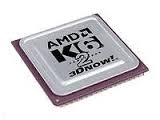
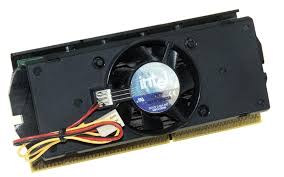
AMD K6-2 Microprocessor vs Intel Pentium III
Intel bought Chips & Technologies this year.
Intel launched their 440LX "Balboa" chipset in September of this year with support only for Pentium II, but officially supported AGP, up to 512 MB SDRAM, Ultra-ATA and full PC97 compliance for the first time. Sadly for many, the LX still only supported an FSB speed of 66 MHz. But shortly after, and also in 1998, Intel corrected this by releasing the game-changing 440BX chipset, codenamed "Seattle". This provided official support for the 100 MHz bus (matching Super Socket 7 finally). For the first time, Intel chips and their motherboard memory would be no longer throttled by the 66 MHz bus restriction, and so the power of the Pentium II was truly being realised over the K6 and K6-2 architecture. These all ran on Intel's new "Slot 1" interface which had the L2 cache on the same circuit board as the CPU. A Pentium II 350 MHz gave slightly higher performance than a K6-2 at the same clock speed.
On the mobile side of the market, Intel launched their new Mobile Pentium chip, codenamed "Tillamook". This was produced on their new 0.25 micron process, resulting in a smaller die size, lower core voltage (1.8V down from 2.45V), and lower external I/O voltage (2.5V down from 3.3V). This meant laptops could achieve up to 1 hour more battery life over the older Mobile Pentium MMX-based laptops.
Memory
Most PCs sold in 1998 came with anywhere from 32MB up to 128MB of SDRAM (Synchronised Dynamic RAM). Slot 1 motherboards used 168-pin DIMM slots, usually 3 or 4 of them. This new SDRAM was faster than the older FPM (Fast Page Mode) or EDO (Extended Data Out) RAM. SDRAM worked at the same speed as the front side bus, which went up to 133 MHz around this time. This first iteration of SDRAM was later referred to as Single Data Rate, or SDR, RAM, once DDR (Double Data Rate) arrived on the scene 2 years later.
Storage
A typical entry-level PC came with a 4.3 GB IDE hard disk. 3.5" floppy drives were still shipped with PCs, and CD-ROM drives were now up to 24x speed. A top-end desktop would come with a whopping 9 GB Ultra Wide SCSI hard disk that spun at 10,000 rpm.
By late 1998, DVD-ROM drives were starting to come bundled with many desktop PCs, signalling the decline of the CD-ROM drive. DVDs had a capacity of around 4.7 GB compared to 700 MB on a CD.
Sandisk also released the very first SSD (Solid-State Disk) with a parallel ATA interface this year.
Laptops
At the start of 1998, a typical laptop was still rocking the Pentium chip at 166 MHz, 200, or 233 MHz. It would use around 24 MB of the now outmoded EDO RAM although some did come with the new SDRAM, 2.1 GB hard disk (4 GB in more pricey models), and a 16x CD-ROM drive. Usually with something like a 12.1" TFT colour display, although the inferior DSTN screens were still commonplace. They would come bundled with Windows 95 or NT 4.0, Microsoft Works or Office 97.
By October 1998, the powerhouse notebooks had specs like this: Pentium II 300 MHz, 64 MB SDRAM, 8 GB hard disk, integrated 56 Kbps modem, ATI Rage LT Pro chipset for graphics with 8 MB dedicated video RAM, a 15" TFT display, dual USB ports, and a 2x DVD-ROM drive with hardware MPEG-2 decoding.
Ultra-thin notebooks arrived too, weighing as little as 3.1 lbs, and being less than 1 inch thick. These typically ran a Pentium MMX CPU, 8 MB RAM and a 1 GB hard disk. They tended to come with a TFT active-matrix display ranging from 7.5" up to 12.1" diagonally.
In 1998, Toshiba slashed the prices of most of their laptop/notebook/ultra notebook range by around 25%. A Satellite Pro 440CDT (Pentium MMX 133 MHz, 16 MB RAM, 1.3 GB hard disk and 12.1" TFT active matrix LCD) would previously cost $2,499 and was dropped to $1,999.
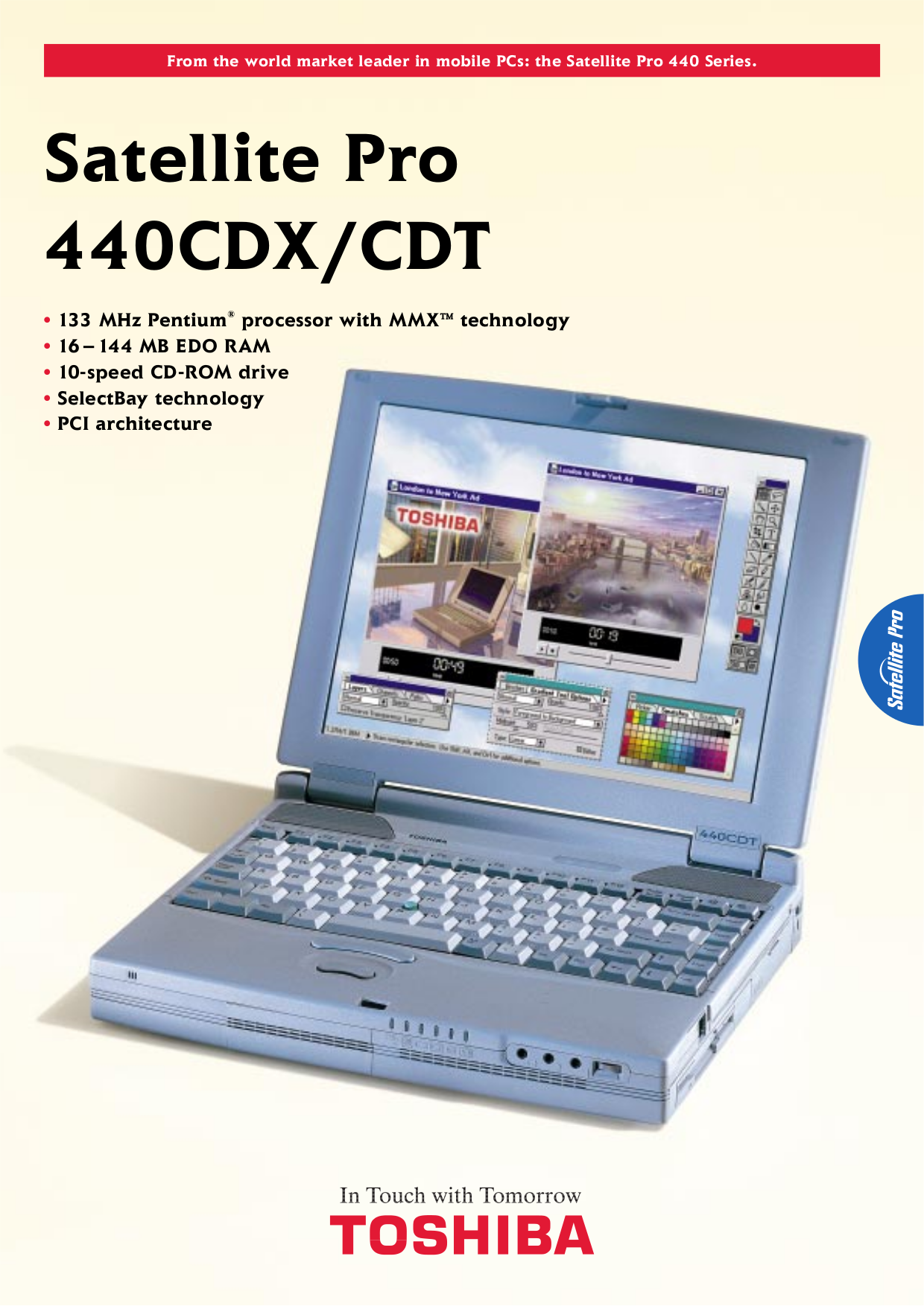
Toshiba Satellite Pro 440CDT
If your budget could stretch to a high-end Tecra 740CDT (Pentium MMX 166 MHz, 16 MB RAM, 2 GB hard disk, 13.3" TFT active matrix LCD), previously costing $4,499 was reduced to just $3,299.
Lower-end laptops came with a 10x CD-ROM drive and DSTN passive-matrix colour LCD panel, whilst the top-end ones now shipped with a DVD-ROM drive and TFT active-matrix display.
Audio
Creative Labs still ruled supreme in 1998, with the vast majority of desktop PCs sporting sound cards with Sound Blaster 16 compatibility.

Creative Labs' first Sound Blaster 16 (Model CT2940)
Creative launched their new Sound Blaster Live! PCI sound card this year, boasting "features and performance surpassing professional Hollywood quality audio equipment". The key element with this was their "Environmental Audio eXtensions" (EAX) surround sound (hence the "Live!" moniker). These got 256-voice synthesis and real-time audio enhancement.
This year, Oak Technology left the PC audio and 3D graphics card market.
Display
We saw the large beige system units of the 80s reduce in size each year, but monitors up to this point had got bigger and bigger as our thirst for more diagonal inches grew. This was partly due to Windows - the ability to run more than one application in different windows meant we wanted to see more on our screens than ever before. 1998 was the year we saw the first "flat panel" displays appearing for desktop PCs.
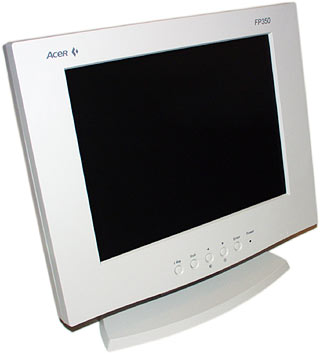
An early LCD monitor for desktop computers (1998)
They were very costly, and differed massively in quality with some struggling to produce a full greyscale range, others appearing very dim, and even more with colour depth issues with banding and dithering evident. They started around 14 or 15", and all had a native resolution of just 1024x768. The viewing angle was also pretty terrible - you had to be sat right in front of it to get the best picture quality - as you moved to the sides the picture lost focus, colour and became much more dim. On the plus side, and by far their biggest benefit was they took up a lot less desk space, and so our journey began to get the screen size back into proportion with the PC system unit.
Since LCD displays do not emit any light of their own, these LCD displays used one of three mechanisms to make then brighter. The first, and cheapest, was reflective, where ambient light would hit a reflector and polariser at the rear of the LCD, and bounce back to the user. Then there was edge-lit where a light source attached around the edges of the display would provide the brighter image. The most common was back-lit with the light source behind the panel. For edge-lit and back-lit displays, several types of light source existed. Electroluminescent was the most common for backlit displays, while Cold Cathode Fluorescent (CCF) was typically used for edgelit displays.
Another benefit was that LCD displays don't emit radiation like CRTs do, and cost a lot less to run.
Software
We already mentioned Windows 98, which really took Windows to another level of stability, reliability and helped put Internet Explorer at the top of the browser tier for the first time, overtaking Netscape Navigator in terms of market share. For the business market, 1998 saw the release of Windows NT 4.0. It came in Workstation [for individual PCs] and Server versions.
January 1998 saw Macromedia Inc., launch Dreamweaver v1.0 for beta testing. This gave the end user a more creative viewpoint to website design whilst still giving full access to the code. A built-in code checker would also tell you if your code would run in only certain browsers (cross-browser compatibility was something yet to be achieved). It was up against tough competition however, with Microsoft FrontPage 98 being the #1 web design tool of choice.
As the year drew to a close, discussions on the Year 2000 bug were gathering pace - how to test your software and hardware, how to plan for it, etc.
Graphics Cards and Gaming
AGP was all the rage (mind the pun), with cards having 4MB or 8MB of onboard video RAM, sometimes with the faster SGRAM.
S3 launched the ViRGE GX2, but followed it later that year with the Savage 3D, which was the first 0.25 micron process GPU ever. It was also the first to use texture compression. Core speeds reached 90 MHz with this card, along with DirectX 6 support, although it had no shader model. While the hardware was great for its time, the driver support was terrible and S3 failed to recover. A "Savage 3D Supercharged" card also appeared this year, with core speeds at an incredible 120 MHz.
Matrox got in on the game seriously in 1998 with the release of the G100 and G200 chipsets. These were solid 3D performers, but were let down by buggy driver support and poor OpenGL performance. The chipsets were seen on a number of "Milllenium" and "Mystique" cards. G200-based cards got an 85 MHz core clock and a 64-bit bus. They also offered full hardware-accelerated DVD and MPEG 1 and 2 playback, up to 16 MB of onboard RAM, and TV Out.
3dfx didn't remain quiet either. In 1998, they released the Voodoo 2 - their second dedicated 3D card, with improved image quality particularly at higher resolutions of 1024 x 768 in which the Voodoo 1 struggled. An enhancement on the original design, the Voodoo2 got two TexelFX chips and one PixelFX chip. These gave the card support for multitexturing, resulting in up to four times the performance in the few games that supported this technique. On the combined 2D/3D card market, they also launched the Voodoo Banshee weeks after the Voodoo 2 launch, but fearing that the Banshee would harm sales of the dedicated 3D card, the Banshee got just one texturing unit.
nVidia updated their NV3-based Riva range to NV4 with the launch of the Riva TNT, with maximum memory upped to 16 MB, DirectX 6 support, and memory clocks increased to 110 MHz. What was new with their NV4 chipset was a second pixel pipeline, 32-bit True Color support, and trilinear filtering. These were able to display at up to 1600x1200 pixels. With all that, nVidia was still trailing behind 3dfx and its proprietary GLide API.
The fifth player still in the 3D graphics card war (but by no means the least) was ATI. In October 1998, they released the Rage 128, which featured a 128-bit memory bus. This card, designed to take down nVidia's TNT chip, was their first to be able to handle dual-texturing (outputting 2 pixels per clock cycle), and also featured a new caching technique which helped with 3D rendering. It also supported a variety of features including alpha blending, texture lighting, hidden surface removal, bump mapping, and lots more. A Rage 128 Pro version was also launched with improved texture filtering and better video encoding/decoding thanks to the inclusion of a "Rage Theater" chip. 2 months after the Pro hit the market, ATI released the Rage Fury MAXX - a graphics card with not one but two processing engines. Similar to 3dfx' Scan-Line Interleave (the first "SLI" technology), the MAXX managed to do this all on a single card. It supported both OpenGL and Direct3D and it came with 64 MB of RAM. The card however, was hampered by a lack of T&L (Transform & Lighting) which would become a bigger issue as time went on.
In other news, Elsa bought Hercules Computer Technology in October for $8.5M. They would continue to use the Hercules brand for a while yet. And STB Systems was acquired by 3dfx Interactive.
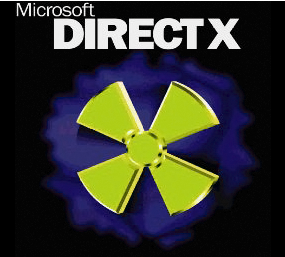 In August, Microsoft launched DirectX 6.0. The first versions of Windows 98 could only support DirectX 5.0 until updates were made available.
In August, Microsoft launched DirectX 6.0. The first versions of Windows 98 could only support DirectX 5.0 until updates were made available.
Direct3D 6.0 added texture compression, more bump mapping modes, range-based fog, and single-pass multitexturing (multitexturing is a means of loading textures to different texture units in the graphics chip, such as on cards like the 3dfx Voodoo 2), support for SSE and 3DNow!, plus S3TC texture compression.
Electronic Arts bought out Westwood Studios as well as parts of Virgin Interactive Entertainment.
New Games in 1998
1998 saw some seminal titles appear on store shelves, including:
- Half-Life
- StarCraft
- Grim Fandango
- Baldur's Gate
- Thief: The Dark Project
- Fallout 2
- Railroad Tycoon II
- Falcon 4.0
- Unreal
- Need for Speed III: Hot Pursuit
- Tom Clancy's Rainbow Six
- Dune 2000
- Carmageddon 2: Carpocalypse Now
- Grand Prix Legends (Papyrus/Sierra)
- Jane's WWII Fighters
Of course, by 1998, all these games were required to run in Windows and came on a CD-ROM. The era of DOS gaming was really becoming history at this point.